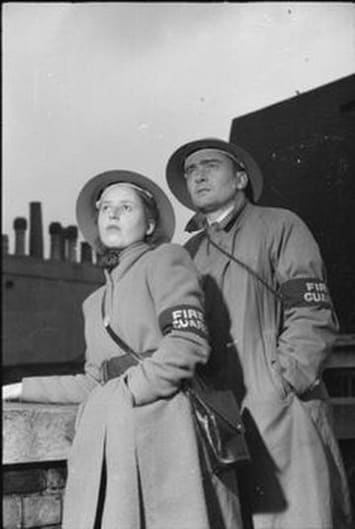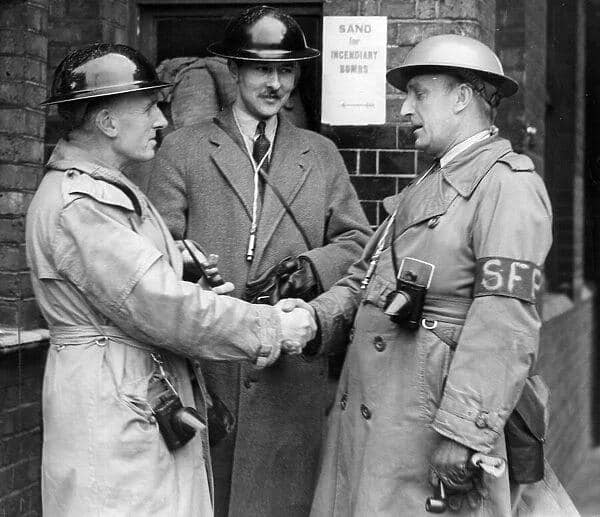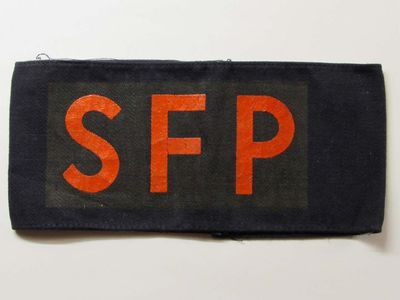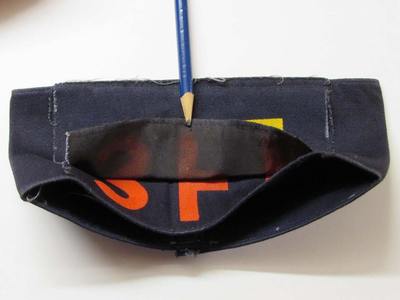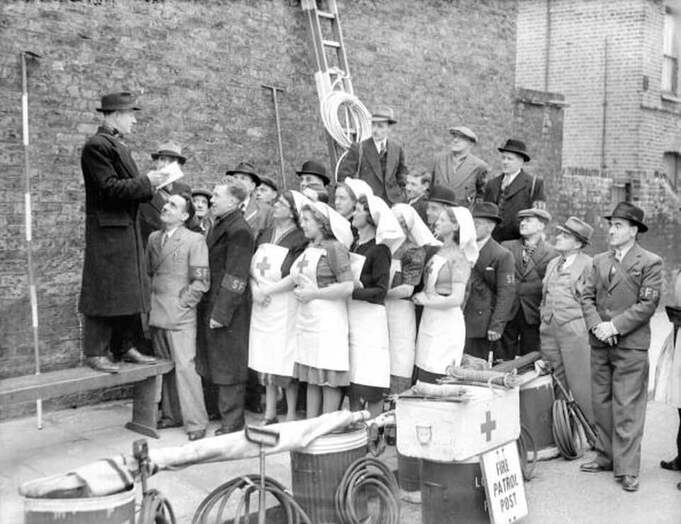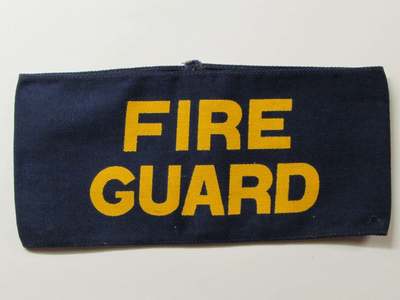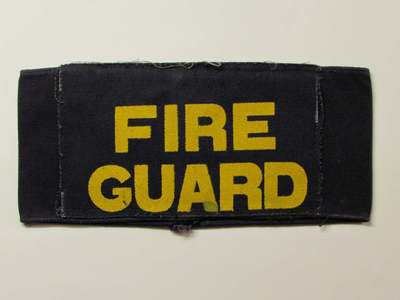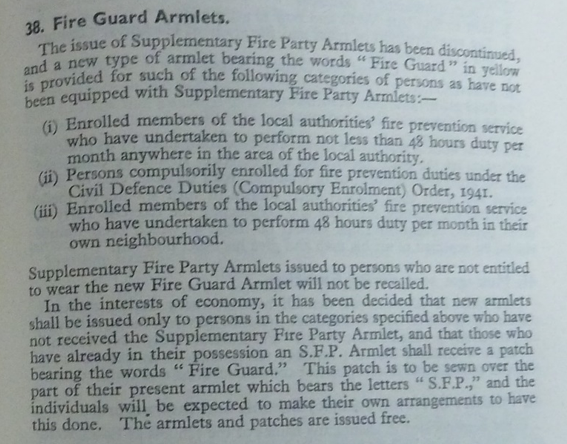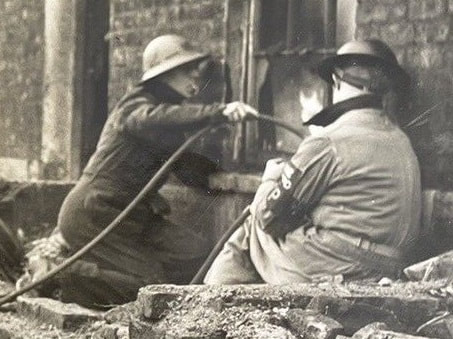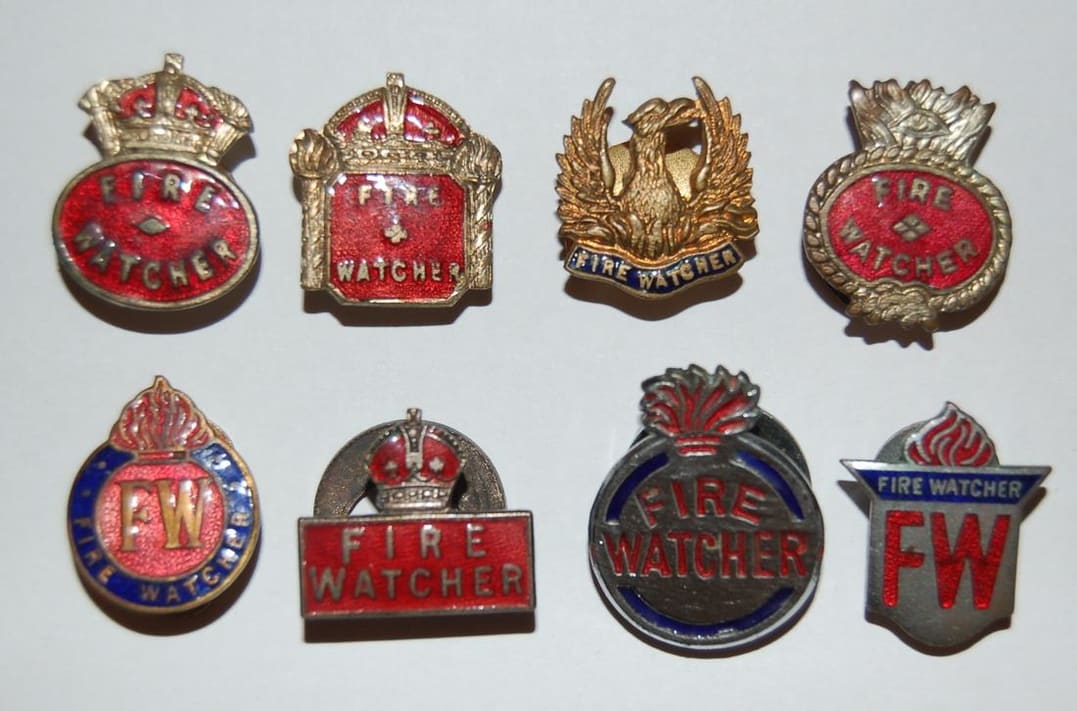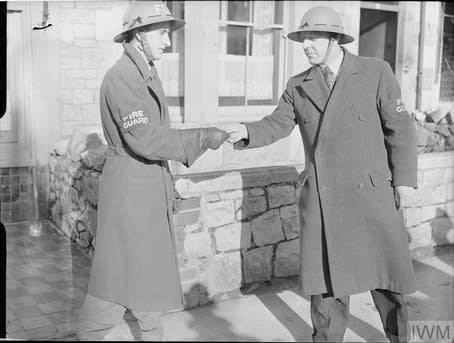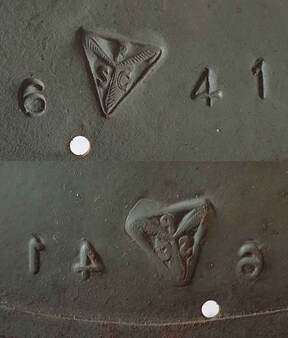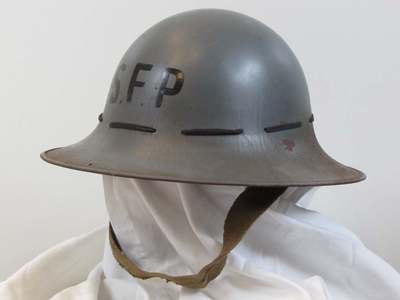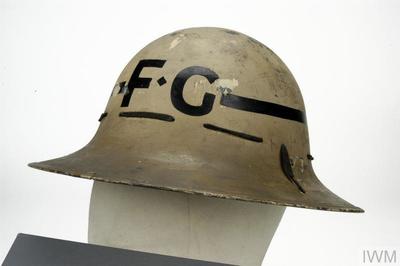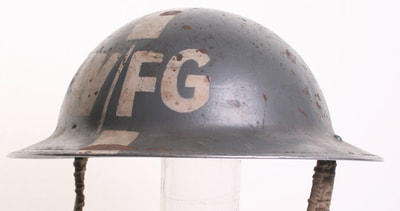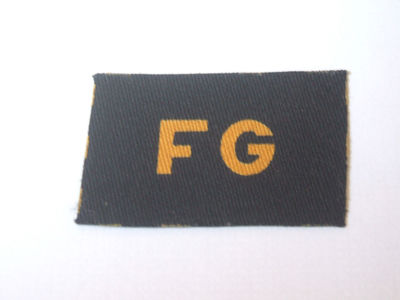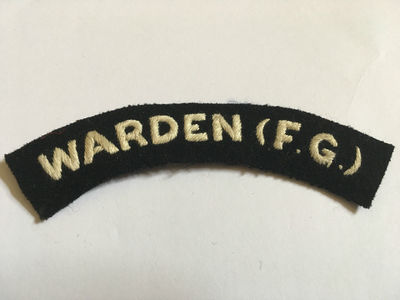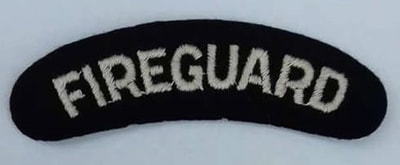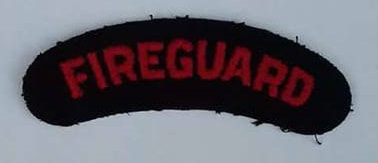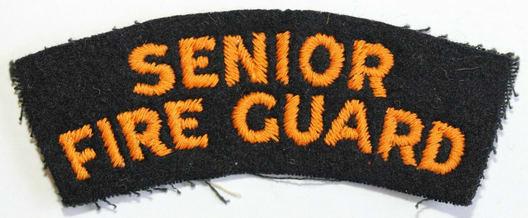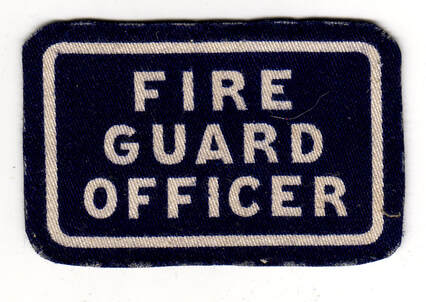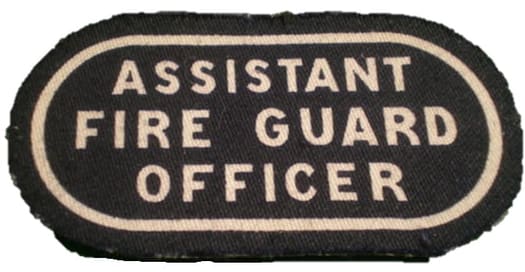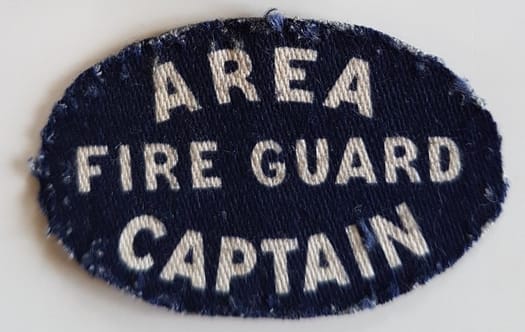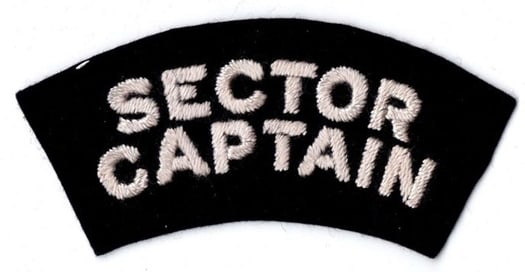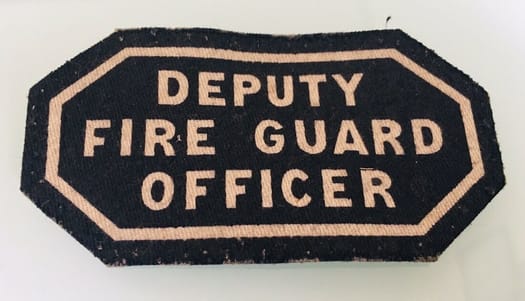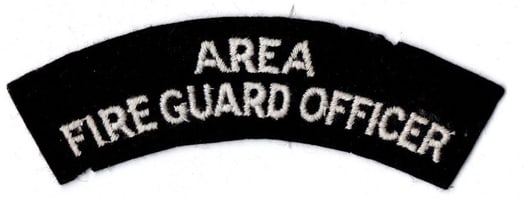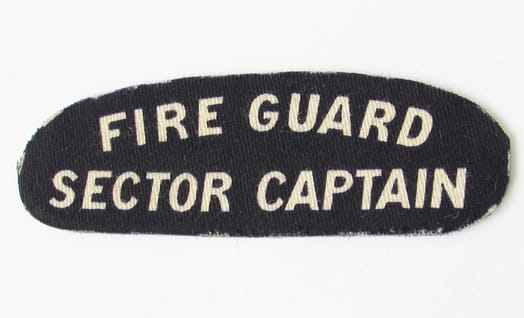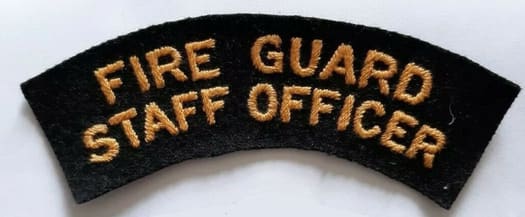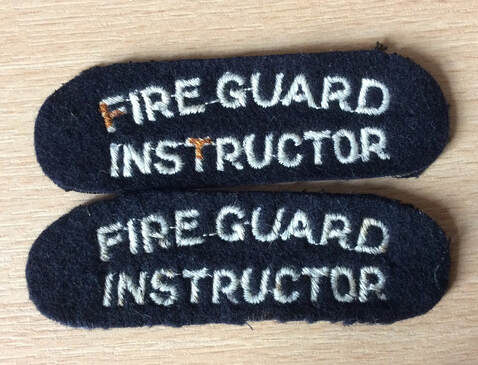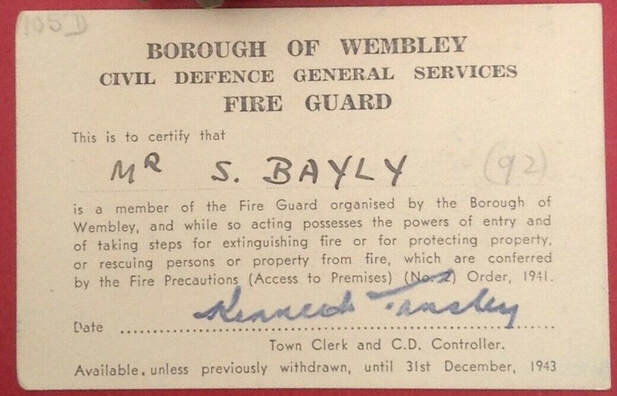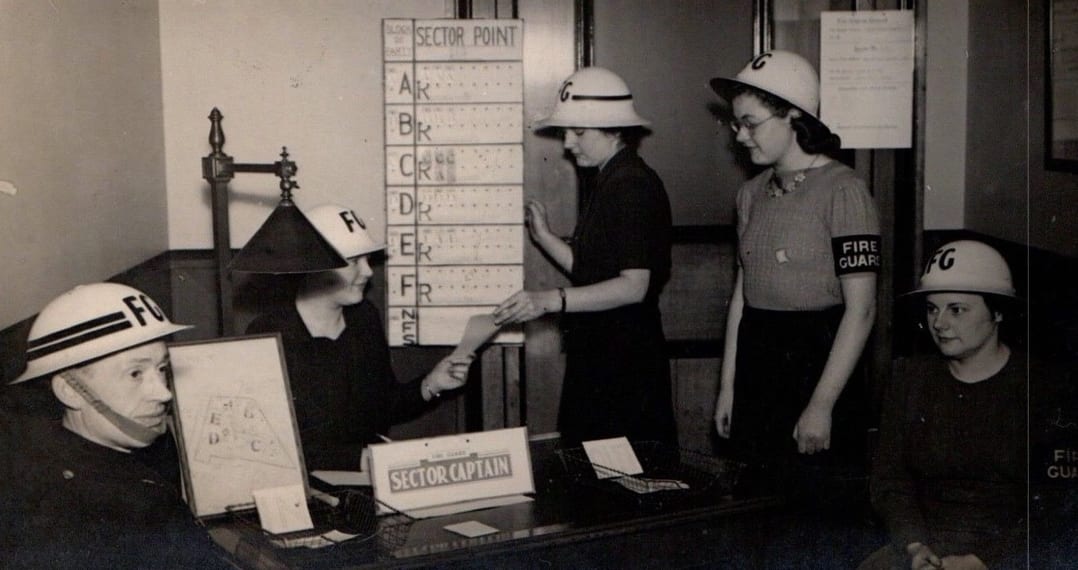WW2 Fire Guards & Fire Watchers Insignia, Armbands, Lapel Badges & Helmets
|
As the Battle of Britain drew to a close in the late Summer of 1940, the Luftwaffe began to move away from military targets to bombing cities. To combat the impending "blitz" on cities a Fire Watchers Order was issued in September 1940. This called for businesses of a certain size to organise volunteers from their workforce to patrol through the evening to detect and put out small fires using stirrup pumps and sand buckets or call the fire services when required. The order was poorly organised (especially within smaller companies) and many businesses were woefully underprepared for the coming bombing attacks.
Following the blitz on London on Sunday, 29 December 1940 it was found that many factories, warehouses, offices and buildings had been left completely unattended. Many devastating fires could have been dealt with if a Fire Watcher had been on duty. To rectify this situation a Fire Watchers Scheme was instigated in January 1941. This new decree meant buildings within certain designated areas had to have a fire watcher present 24 hours a day. They were to deal with incendiaries as best they could and call on the assistance of the fire and rescue parties as required. For some businesses finding cover for their buildings was difficult and so the Government implemented a compulsory scheme of fire watching. Fire Guards (men (aged 16-30) and women (aged 20-45) were to be called up for duty and volunteers were also accepted (men up to age 70 and women to the age of 60). Generally, the duties of watching buildings were tedious, with long, boring nights, and the requirement proved highly unpopular. |
Fire Guards did not receive any official uniform but generally wore civilian clothes or a boiler suit. They would be issued with a helmet, armband, torch and a means of dealing with small fires (a stirrup pump) and a scoop for picking up incendiaries and a bucket of sand to put them out.
Read a history of Fire Watchers and Fire Guard
Read a history of Fire Watchers and Fire Guard
Supplementary Fire Parties / Street Fire Parties - SFP Armbands / Armlets
In the summer of 1940, Supplementary Fire Parties were organised by local fire brigades to assist in dealing with the outbreak of fires caused during air raids (from incendiaries mainly). They wore a dark blue cotton armband with red SFP letters. From August 1940, these armbands were then issued to the Street Fire Parties that were organised by the Wardens' Service. There were also armbands with the word FIRE in red issued.
Both Supplementary and Street Fire Parties were reorganised within the Fire Guard Organisation. Existing SFP armbands were updated with a FIRE GUARD patch sewn over the SPF letters. The patches are quite hard to come by these days.
WW2 Fire Guard Armbands / Armlets
ARP Pattern 39 armlets featuring FIRE GUARD in gold/yellow lettering on dark blue cotton were introduced in August 1941. 1.8 million were ordered, as well as 1 million patches for sewing over the existing armlets worn by Street Fire Parties. White lettering on dark blue cotton was introduced during 1943 reorganisation to differentiate itself from the Wardens' Service. From March 1944 members of the Fire Guard were officially allowed to add war service chevrons to their armbands. The chevrons were to be placed to the left of the writing when viewed by another person. Additionally, wound stripes could be sewn to the right of the FIRE GUARD lettering; if both gold and red wound stripes had been awarded just a single red was allowed placed to the right of any old gold ones.
WW2 Fire Watcher Badges
A large variety of Fire Watcher badges were manufactured and issued by companies to people undertaking fire watching duties.
For information about Fire Guard Instructors' badges see this page.
Fire Guard Helmets - Civilian Protective Helmet (Zuckerman) & Mk. II Helmet
|
Many Fire Guards were issued with the Civilian Protective Helmet (known as the Zuckerman). This helmet, with a high dome to crumple when impacted by falling debris, was relatively cheap to manufacture and used a mild steel of a much lower quality than that in the typical Mk. II helmet.
It featured a simple leather lining that was attached with a bootlace string through holes in the helmet. Helmets were marked M & L (Medium and Large), six different liner sizes and two loops for a chinstrap but none was included (though private purchase chinstraps could be bought). A makers stamp and date of manufacture appear on the majority of examples. A number of helmets were issued with SFP (for Street or Supplementary Fire Party) but were replaced with FG from August 1941. However, many examples of SFP continued to be used throughout the rest of the war. Seniority within the Fire Guard service was denoted by black bands around the helmet. There is photographic evidence of some Fire Guard personal with the Mk.II helmet and "W/FG" for "Warden/Fire Guard". Read a detailed overview about the Zuckerman helmet on the blog. |
WW2 Fire Guard Ranks, Zuckerman & Mk. II Helmet Markings & Colour
Rank |
Helmet colour/type |
Helmet marking |
Fire Guard Officer |
White - Mk. II |
1 broad (1") band under 2 narrow (½") bands |
Deputy Fire Guard Officer |
White - Mk. II |
1 broad (1") band under 1 narrow (½") band |
Assistant Fire Guard Officer |
White - Mk. II |
1 broad (1") band |
Fire Guard Area Officer |
White - Mk. II |
3 narrow (½") bands |
Fire Guard Area Captain |
White - Mk. II |
3 narrow (½") bands |
Sector Captain (lowest uniformed FG rank) |
White - Zuckerman/Mk. II |
2 narrow (½") bands |
Fire Guard Area Instructor |
White - Zuckerman/Mk. II |
2 narrow (½") bands |
Fire Guard Block Leader |
White - Zuckerman |
1 narrow (½") band |
Fire Guard Street Party Leader |
White - Zuckerman |
1 narrow (½") band |
Fire Guard Inspector |
Grey - Zuckerman (as issued) |
2 narrow (½") bands |
Fire Guard Reserve Centre Superindendent |
Grey - Zuckerman (as issued) |
1 narrow (½") band |
Street Party Leaders, Captains, Head & Senior Fire Guards
Street Fire Party Leader – in charge of approx. 150 yards of street or 30 houses and between 10 and 30 individual Fire Guards (organised into Stirrup Pump Teams of three people). They were not a member of an individual team.
Fire Guard Street Captain – in charge of no more than six Street Fire Party Leaders and about 50 to 150 Fire Guards.
Senior Fire Guard – in charge of no more than six Fire Guard Street Captains or about 500 Fire Guards (with around 75 on duty at any one time).
Head Fire Guard – in London there would be a Head Fire Guard for every District Warden in charge of no more than six Senior Fire Guards or about 2,500 Fire Guards. Outside London, a Head Fire Guard would be in charge of approx. six to eight Senior Fire Guards.
Fire Guard Staff Officer – responsible to the Chief Warden for the efficiency of the local authority’s Fire Guard Organisation. Inspects Head and Senior Fire Guards to ensure compliance.
Fire Guard Street Captain – in charge of no more than six Street Fire Party Leaders and about 50 to 150 Fire Guards.
Senior Fire Guard – in charge of no more than six Fire Guard Street Captains or about 500 Fire Guards (with around 75 on duty at any one time).
Head Fire Guard – in London there would be a Head Fire Guard for every District Warden in charge of no more than six Senior Fire Guards or about 2,500 Fire Guards. Outside London, a Head Fire Guard would be in charge of approx. six to eight Senior Fire Guards.
Fire Guard Staff Officer – responsible to the Chief Warden for the efficiency of the local authority’s Fire Guard Organisation. Inspects Head and Senior Fire Guards to ensure compliance.
Fire Guard Battledress Blouse Uniform Insignia
As members of the Wardens' Service, all ranking Fire Guard officers (for example Head and Senior Fire Guards) were entitled to wear the same dark blue battledress and trousers seen worn by other Civil Defence services. To signify their role within the Fire Guard service distinct insignia was available; these included specific shoulder titles, rank badges (three chevrons for Head Fire Guards, two chevrons for Senior).
When the Fire Guard service was reorganised in August 1943, new shoulder titles - white lettering on blue (but a lot of old gold yellow versions were also produced) - replaced (or were added in addition to) the use of the Warden title.
When the Fire Guard service was reorganised in August 1943, new shoulder titles - white lettering on blue (but a lot of old gold yellow versions were also produced) - replaced (or were added in addition to) the use of the Warden title.
Warden / Fire Guard Shoulder Titles
WW2 Fire Guard Shoulder Titles
WW2 Fire Guard Officer, Deputy, Assistant, Staff, Area and Captain Shoulder Titles
WW2 Fire Guard Identity Warrant Cards
As the role of Fire Guards allowed them to enter premises to deal with fires, they received identity warrant cards for the purpose. Similar to the cards issued to ARP wardens these cards usually carried the holders name, the local authority and the measures that individual could undertake.
